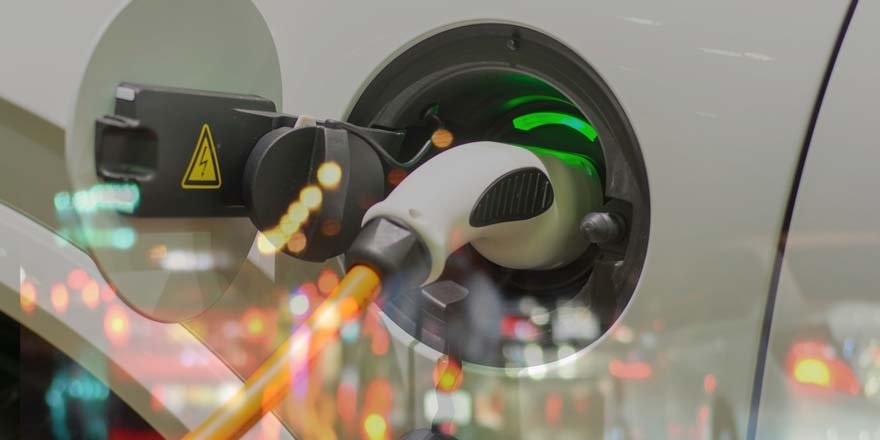Best practices for electric vehicle procurement in city and state entities

North Americans purchased a record-breaking number of electric vehicles (EVs) in 2023. More than 17% of new light-duty vehicles were hybrids, plug-ins, and BEVs in Q3, with overall new EV sales jumping from 7.3% to 9%.
This incremental gain is due in part to forward-thinking city and state governments. As non-federal agencies prepare for the EV future, sculpting an efficient procurement process matters more than ever.
This guide can help you make strategy decisions with a list of best practices for electric vehicle procurement.
EV applications for city and state governments
Before acquiring an EV for your fleet, you must consider the role that it should fulfill. Will it be a passenger vehicle? Will it carry non-human cargo? Do you need it to perform a specific function, like as a street sweeper or garbage truck?
Keep in mind some EVs are better suited for these functions than others. Potential applications for specific models depend primarily on battery size and type.
For example:
- BEVs: These are subcompact passenger vehicles with a driving range of 50 to 200 miles. They are best for short, local drives in areas with light traffic.
- EVs: Traditional EVs are best for dense urban settings. They can accommodate heavy traffic and speeds below 45 mph.
- PHEVs: Plug-in hybrid EVs use traditional fuel and electricity. There’s extra space for hauling cargo and support for distances between 15 and 90 miles.
- Medium to heavy-duty: This vehicle class focuses on unique applications. Many take the form of cargo vans, refuse trucks, street sweepers, tractor-trailers, and buses.
If you’re struggling to narrow down specific EV applications, consider gathering a committee of stakeholders to better inform your decisions.
Five best practices for electric vehicle procurement
The proper procurement of EVs is an art and a science. To do it as quickly, efficiently, and cost-effectively as possible, you must accommodate these best practices.
1. Perform an initial fleet audit
Rightsizing identifies low-performing vehicles that you can easily replace with EVs. Any vehicle with low utilization, high maintenance bills, or high mileage may be an excellent candidate.
If you don’t have a recent audit on hand, you can acquire fleet management software to assist with the decision-making process.
2. Rally around driver education and outreach
Driver training greatly reduces the cost of EV maintenance, which ultimately increases the sustainability of your procurement process. After all, reducing unnecessary wear and tear ensures that the vehicle remains viable for years to come.
Good EV driver education may reduce risky driving behaviors and range anxiety. This will extend the life of your vehicles and ensure new acquisitions achieve higher utilization.
3. Install proper charging infrastructure
Although more than 165,000 public charging ports are currently in the U.S., many city and state organizations need additional infrastructure. Experts suggest a need for 1.2 million chargers by 2030, meaning many local areas must install their own chargers.
First, consider your need for new or retrofitted structures. Could you convert an existing building, or should you set mandates for new constructions or parking lots?
Second, consider the three charging levels available: Level 1, Level 2, and DC fast charging stations.
4. Acquire EV telematics
EV telematics monitor new vehicles and measure their performance in tangible ways. The most popular selections for city and state entities include:
- Route monitoring: This can shave 186 miles off routes per month, remaining within range for EVs.
- Predictive maintenance: You can save 12% compared to proactive maintenance and 40% compared to reactive maintenance.
- Mileage tracking: EVs need to drive over 12,000 miles per year to achieve payback within their useful lives.
Certain telematics offer all three features, so you can save additional money for your organization.
5. Rely on cooperative contracts
Cooperative contracts are the simplest way to acquire EVs for your fleet. While the complete RFP process takes up to three years, you could complete the cooperative contract process in as little as two weeks.
Finding cooperative contracts for EVs
It’s clear that cooperative contracts are the future of EV procurement for city and state entities. Sourcewell can point you in the right direction, offering competitively sourced options from hundreds of suppliers.
You can find cooperative contacts for EV procurement in three steps:
- Register (or find) your organization online. The service is 100% free for qualified organizations.
- Browse cooperative contracts in your areas of interest. You can browse options by category, supplier, or keyword.
- Contact the supplier to quickly receive a quote. You can also discuss contract documentation or the solicitation process with a member of the Sourcewell team.
Sourcewell is a free, no-obligation service for qualified North American entities.
Switching to EVs can feel overwhelming, but you don't have to do it alone. See how cooperative purchasing can ease the transition, expedite procurement, and help you save time and money with easy-to-access solutions.


